|
Books Should Be Free Loyal Books Free Public Domain Audiobooks & eBook Downloads |
|
|
Books Should Be Free Loyal Books Free Public Domain Audiobooks & eBook Downloads |
|
Top Authors |
|---|
|
Book type:
Sort by:
|
By: Bram Stoker (1847-1912) | |
|---|---|
 The Lair of the White Worm
The Lair of the White Worm
Set in Mercia, a small part of the English county of Derbyshire, the novel focuses on the events experienced by Adam Salton in the town he gradually discovers to be host to mysterious and inexplicable occurrences, which are further intensified with its equally eccentric residents. Exploring topics including mesmerism, occultism, and supernatural forces, Stoker’s piece depicts all the essential elements of a thrilling horror story. The horror novel gets under way with the introduction of Adam... | |
 The Jewel of Seven Stars
The Jewel of Seven Stars
The Jewel of Seven Stars (also published under the name: The Jewel of the Seven Stars) is a horror novel by Bram Stoker first published in 1903. The story is about an archaeologist’s plot to revive Queen Tera, an ancient Egyptian mummy. | |
 Dracula's Guest and other Weird Tales
Dracula's Guest and other Weird Tales
Nine Gothic Horror Tales by the author of Dracula. Note : These tales are not for the squeamish!!! 0r a dark windy night. | |
By: L. Frank Baum (1856-1919) | |
|---|---|
 The Wonderful Wizard of Oz
The Wonderful Wizard of Oz
One of the greatest American novels and a popular culture sensation, The Wonderful Wizard of Oz depicts the adventures of the young Dorothy Gale, who is swept away from her colorless farm home in Kansas by a cyclone, and winds up in the magical Land of Oz. Trapped in an unknown land, Dorothy must find a way back home and subsequently embarks on an adventure and meets a group of colorful characters along the way. Serving as an inspiration throughout generations, the children’s novel has been represented through various cinema adaptations and musicals... | |
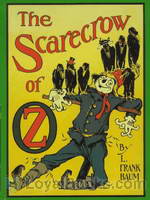 The Scarecrow of Oz
The Scarecrow of Oz
Published in 1915, The Scarecrow of Oz is the ninth book in the Oz book series and focuses on the adventures of Cap’n Bill, Trot, and the Scarecrow, who find themselves entangled in the politics of Jinxland and must work against formidable odds to overthrow its despot and restore rule to its rightful successor. Apart from the appearances of familiar faces, the novel also accommodates a fresh set of characters and magical creatures residing in the Land of Oz, further contributing to its classification as a typical Baum masterpiece... | |
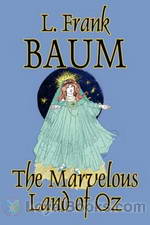 The Marvelous Land of Oz
The Marvelous Land of Oz
Published in 1904, The Marvelous Land of Oz is the second book in Baum’s Oz series and follows the adventures of Tip, a young boy who travels the mystical Oz after running away from the terrifying witch Mombi. Furthermore, the novel reunites readers with familiar characters including the Scarecrow, Tin Woodman, Glinda the Good Witch, while also introducing bright new characters who deem to be just as memorable. Unlimited action, intense magic, captivating characters, and an unexpected twist, the adventure novel has remained a classic for generations, and has only strengthened the series appeal with its fresh intake on the familiar set... | |
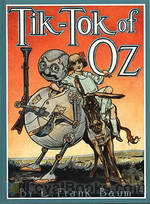 Tik-Tok of Oz
Tik-Tok of Oz
Betsy Bobbin encounters many strange and exciting adventures and people in the land of Oz; a side-plot is Queen Ann of Oogaboo’s mission to take over Oz. | |
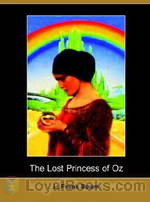 The Lost Princess of Oz
The Lost Princess of Oz
Who is stealing all the magic in Oz? Dorothy and her friends set out to comb all of Oz, not only for magic stolen from Glinda and the Wizard, but also for the kidnapped princess, Ozma. Along the way, they explore regions never seen in other Oz books, meeting strange and interesting people and animals, and falling into peril more than once. It’s a desperate mission – for if the thefts are all linked, then it means that some magician unknown to them has acquired powers beyond any available to them now. How will they find him? And how will they conquer him? Not one of them knows – but with continuing faith that goodness will triumph, they march forth to try. | |
 The Road to Oz
The Road to Oz
Dorothy and Toto set out to help the Shaggy Man (who really is very shaggy) and end up lost, following a strange new road. Along the way they meet Button Bright, a little boy who is not really very bright at all, The Rainbow's Daughter, the Fox King and many other curious creatures including the deadly Scoodlers who want to make soup of them and the Musicker who can't stop making music. But the adventurers make their way to the Deadly Desert and cross it in a novel way to reach the Land of Oz. Santa Clause is a surprise guest at Ozma's Birthday Party along with many Queens, Kings and and a wonderful time is had by all. Including Toto! [written by Phil Chenevert] | |
 The Emerald City of Oz
The Emerald City of Oz
Oh My Goodness! What a lot of incredible adventures are packed into this epic. The evil gnome king plots to destroy Oz and enslave it's people; evil creatures from many places are enlisted in this dastardly plan that has every chance of success. Dorothy brings her Aunt and Uncle from Kansas where they have been evicted from the farm, to live in Oz and they are given a tour of parts of Oz that have never been visited before. A city of paper dolls, a city of jig saw people, a city of bunnies and many many more odd and wonderful people are visited and enjoyed... | |
 Sky Island
Sky Island
Published in 1912, the fantasy novel focuses on the exciting adventures of Trot, Cap’n Bill and Button Bright, as they are accidentally transported to a mysterious island in the sky, where they encounter its eccentric residents, an unscrupulous ruler, and a strange set of laws. The story sets into motion when Trot, a little girl from the southern coast of California, and Cap’n Bill meet a peculiar young boy carrying a large umbrella. Introduced as Button Bright, the young boy reveals that... | |
 Ozma of Oz
Ozma of Oz
Ozma of Oz: A Record of Her Adventures with Dorothy Gale of Kansas, the Yellow Hen, the Scarecrow, the Tin Woodman, Tiktok, the Cowardly Lion and the Hungry Tiger; Besides Other Good People too Numerous to Mention Faithfully Recorded Herein published on July 30, 1907, was the third book of L. Frank Baum's Oz series. It was the first in which Baum was clearly intending a series of Oz books. | |
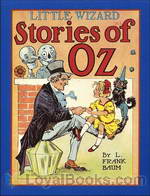 Little Wizard Stories of Oz
Little Wizard Stories of Oz
The “Little Wizard Stories of Oz” are six short stories written by L. Frank Baum in 1913. By all accounts, Baum intended to finish the Oz series with “The Emerald City of Oz,” published in 1910. Following that, he attempted to write non-Oz books, publishing “The Sea Fairies” in 1911 and “Sky Island” in 1912. But, (as Baum himself laments in the prefaces of many of his Oz books,) his “little tyrants” were only interested in hearing more Oz stories. So in 1913, he returned to writing about Oz, putting out both The “Little Wizard Stories” and “The Patchwork Girl of Oz” that year... | |
 The Enchanted Island of Yew
The Enchanted Island of Yew
A fairy has become bored with her life, and convinces some young girls to transform her into a human boy so she can go on adventures. The adventures come fast and furious, as the newly-named Prince Marvel explores the surrounding kingdoms. A masochistic squire accompanies Marvel, helping him with assorted kings, knights, dragons, and other medieval menaces along the way. | |
 The Master Key
The Master Key
The Master Key was one of Baum’s earliest full length fantasy books for children, published in 1901 just one year after The Wonderful Wizard of Oz. The protagonist, Rob, while experimenting in his workshop, accidentally summons up an electrical fairy who presents him with electrical devices so advanced as to seem magical. His gifts include a flying contraption, a stun gun, and something resembling an omniscient portable TV set. Rob travels the world, rendering assistance to European heads of state and narrowly escaping disaster at the hands of “primitive” cannibals, Turks and Tatars, pirates, and evil scientists who try to steal his inventions... | |
 The Life and Adventures of Santa Claus
The Life and Adventures of Santa Claus
This wonderful children’s short story tells all about the youth, manhood and old age of Santa Claus and how he became immortal. (Introduction by jedopi) | |
 American Fairy Tales
American Fairy Tales
This collection of fantasy stories was originally serialized in regional newspapers, prior to being published as a complete volume. The stories, as critics have noted, lack the high-fantasy aspect of the best of Baum’s work, in Oz or out. With ironic or nonsensical morals attached to their ends, their tone is more satirical, glib, and tongue-in-cheek than is usual in children’s stories; the serialization in newspapers for adult readers was appropriate for the materials. (Introduction by Wikipedia and Matthew Reece) | |
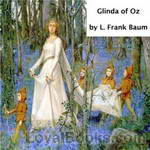 Glinda of Oz
Glinda of Oz
Glinda of Oz is the fourteenth Land of Oz book and is the last one written by the original author L. Frank Baum, although the series was continued after his death by several other authors. Dorothy and Ozma discover that a war is brewing in a distant and unexplored part of Oz, between two mysterious races, the Flatheads and the Skeezers. The girls set out to try to prevent the fighting, not knowing what dangers await them. | |
 The Magic of Oz
The Magic of Oz
L. Frank Baum’s last beloved Oz book before his death, this story deals with the discovery of a powerful magic word by a young boy from Oz, who immediately is plunged head-first into adventure through his discovery. | |
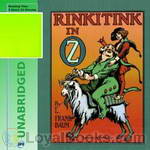 Rinkitink in Oz
Rinkitink in Oz
Rinkitink in Oz is the tenth book in the Oz series written by L. Frank Baum, first published in 1916. It was originally written in 1905 as a stand alone fantasy work and subequently rewritten as an Oz book. Therefore, most of the action takes place outside of Oz in neighboring fairy countries. It tells the story of Prince Inga’s quest to rescue his parents from captivity after his island home is ravaged by enemies. With the help of three magical pearls and the more dubious assistance of the excessively... | |
 Mary Louise
Mary Louise
The Bluebird Books is a series of novels popular with teenage girls in the 1910s and 1920s. The series was begun by L. Frank Baum using his Edith Van Dyne pseudonym, then continued by at least three others, all using the same pseudonym. Baum wrote the first four books in the series, possibly with help from his son, Harry Neal Baum, on the third. The books are concerned with adolescent girl detectives— a concept Baum had experimented with earlier, in The Daring Twins (1911) and Phoebe Daring (1912)... | |
 The Tin Woodman of Oz
The Tin Woodman of Oz
The Tin Woodman of Oz is the twelfth Land of Oz book written by L. Frank Baum and was originally published on May 13, 1918. The Tin Woodman is unexpectedly reunited with his Munchkin sweetheart Nimmie Amee from the days when he was flesh and blood. This was a backstory from The Wizard of Oz. | |
 The Sea Fairies
The Sea Fairies
In 1910, Baum hoped to end the Oz series and follow with a new series about a little girl named Trot and her sailor companion, Cap’n Bill. The Sea Fairies (1911) was the first book in the projected series and took Trot and Cap’n Bill under the sea where they had adventures with mermaids and other fantastic creatures. It was followed by Sky Island (1912) and then Baum returned to the Oz titles. He brought Trot and Cap’n Bill to Oz in the Scarecrow of Oz (1915). | |
 Aunt Jane's Nieces
Aunt Jane's Nieces
Jane Merrick is a wealthy, elderly, difficult invalid woman who is preparing for her approaching death. In her youth, she inherited her money and estate from her fiancé, Thomas Bradley, who died before their wedding took place. With no children of her own, she calls for her three teenage nieces to visit her, so she can decide who will inherit her estate. They are Louise Merrick, Elizabeth De Graf, and Patsy Doyle, children of Jane’s younger brother and sisters. Each of the three cousins is a different type. | |
 Mary Louise Solves a Mystery
Mary Louise Solves a Mystery
The Bluebird Books is a series of novels popular with teenage girls in the 1910s and 1920s. The series was begun by L. Frank Baum using his Edith Van Dyne pseudonym, then continued by at least three others, all using the same pseudonym. Baum wrote the first four books in the series, possibly with help from his son, Harry Neal Baum, on the third. The books are concerned with adolescent girl detectives— a concept Baum had experimented with earlier, in The Daring Twins (1911) and Phoebe Daring (1912)... | |
 The Patchwork Girl of Oz
The Patchwork Girl of Oz
An unlucky Munchkin boy named Ojo must travel around Oz gathering the ingredients for an antidote to the Liquid of Petrifaction which has turned his beloved uncle Unc Nunkie and the wife of the Liquid's creator into marble statues. Ojo is joined by the patchwork girl Scraps, Dorothy, Dr. Pipt's Glass Cat, the Woozy, the Shaggy Man, the Scarecrow and the Tin Woodman. They eventually visit the Emerald City to ask for help from the Wizard of Oz. | |
 Mary Louise in the Country
Mary Louise in the Country
The Bluebird Books is a series of novels popular with teenage girls in the 1910s and 1920s. The series was begun by L. Frank Baum using his Edith Van Dyne pseudonym, then continued by at least three others, all using the same pseudonym. Baum wrote the first four books in the series, possibly with help from his son, Harry Neal Baum, on the third. The books are concerned with adolescent girl detectives— a concept Baum had experimented with earlier, in The Daring Twins (1911) and Phoebe Daring (1912)... | |
 Mary Louise and the Liberty Girls
Mary Louise and the Liberty Girls
The Bluebird Books is a series of novels popular with teenage girls in the 1910s and 1920s. The series was begun by L. Frank Baum using his Edith Van Dyne pseudonym, then continued by at least three others, all using the same pseudonym. Baum wrote the first four books in the series, possibly with help from his son, Harry Neal Baum, on the third. The books are concerned with adolescent girl detectives— a concept Baum had experimented with earlier, in The Daring Twins (1911) and Phoebe Daring (1912)... | |
 Aunt Jane's Nieces Abroad
Aunt Jane's Nieces Abroad
Aunt Jane's Nieces Abroad is the second of the ten book series of Aunt Jane's Nieces. The story continues with the three much loved girls - the sweet and generous Patsy, the cunning Louise, and the sullen Beth. This time they're on a tour of Europe with their down-to-earth uncle John Merrick.The benevolent uncle and his nieces meet mysterious and sinister Victor Valdi, his daughter Tato, and a pretend nobleman, Count Ferralti, who fancies Louise. The story revolves around travel and kidnapping, and the subsequent adventures of the three young girls, told in Baum's own inimitable style that keeps us at the edge of our seats. | |
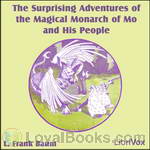 The Surprising Adventures of the Magical Monarch of Mo and His People
The Surprising Adventures of the Magical Monarch of Mo and His People
The Magical Monarch of Mo is a set of stories about the titular king, his queen, and his royal children. The stories are uproariously funny, dealing with topics as absurd as a man losing his temper who then tries to find it, an evil midget who steals a princess's big toe, and an entire city filled with highly civilized monkeys! Join the Monarch and all his friends for a rollicking adventure, filled with fun for the whole family! | |
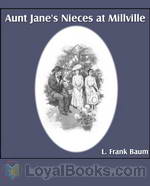 Aunt Jane's Nieces at Millville
Aunt Jane's Nieces at Millville
Aunt Jane's Nieces at Millville is a 1908 young-adult novel written by L. Frank Baum, famous as the creator of the Land of Oz. It is the third volume in "the successful Aunt Jane Series," following Aunt Jane's Nieces and Aunt Jane's Nieces Abroad. Aunt Jane's Nieces at Millville picks up the story of the three cousins, Patsy Doyle, Beth De Graf, and Louise Merrick, soon after their return from Europe in Aunt Jane's Nieces Abroad. As in that earlier book, their benign and eccentric millionaire Uncle John devotes much of his fortune to helping others — an effort managed by Patsy's father, Major Doyle. These efforts do not always yield fiscally sound results... | |
By: Thomas Hardy (1840-1928) | |
|---|---|
 The Return of the Native
The Return of the Native
Amidst the fireworks and celebrations of Guy Fawkes Night, a covered wagon winds its way along the dark country heath land. Hidden at the back is a young woman who is running away from a thwarted marriage ceremony with the local innkeeper. The driver of the wagon, a young herdsman, is secretly in love with her but is so devoted that he vows to help her reunite with her useless lover. The opening scenes of Thomas Hardy's sixth novel The Return of the Native, form the backdrop to this story of a profoundly flawed woman and the men who fall in love with her... | |
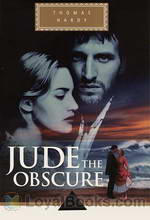 Jude the Obscure
Jude the Obscure
A young man from a poor, working-class background, passionate about education, who aspires to become a professor. His teacher, a respected role model who turns out to have feet of clay. An independent, free-spirited woman. Another who is scheming, selfish and flirtatious. Dominating their lives is the magnificent university town of Christminster. All these and a host of other colorful, memorable characters inhabit the pages of Thomas Hardy's monumental fourteenth novel published in 1895. Thomas Hardy's fame as a novelist rivals that of even Dickens in Victorian literature... | |
 Tess of the d'Urbervilles
Tess of the d'Urbervilles
Her father compels her to visit the biggest mansion in the village to “claim kin” with the aristocratic d'Urberville family. She falls prey to the debauched son of the house and returns home to give birth in secret to an illegitimate baby who lives only for a few days. Determined to put her past behind her, she goes to work as a milkmaid in a faraway country farmhouse where she falls in love with a good and kind young man. Her conscience troubles her and she confesses the truth about herself in a letter which her beloved never receives... | |
 Far From the Madding Crowd
Far From the Madding Crowd
This story opens with a lovely, poor and proud young woman who lives with her aunt. The young woman saves the life of a farmer who subsequently falls in love with her. However, the young woman inherits a fortune and moves away. On the flip side the farmer loses everything he has and travels around the country seeking employment. One evening the farmer helps to put out a blazing fire in a lonely farm. When the veiled owner comes out to thank him, he discovers that she is none other than the beautiful woman who once rejected him and moved away... | |
 The Mayor of Casterbridge
The Mayor of Casterbridge
Irritated and drunken, an itinerant farm-worker sells his wife and child to a stranger. Thus begins The Mayor of Casterbridge, set in rural and small-town England in the mid-1800s. In the original subtitle, Hardy called this the story of "a man of character," and the central character, Michael Henchard, is one of English fiction's greatest creations. Henchard is deeply developed as a realistic character, but also larger-than-life in the manner of a Greek or Shakespearean tragic hero — huge in his determination and huge in his failings... | |
 Under the Greenwood Tree
Under the Greenwood Tree
This novel is subtitled The Mellstock Quire, A Rural Painting of the Dutch School. The Quire is the group of musicians who accompany the hymns at the local church and we follow the fortunes of one member, Dick Dewy, who falls in love with the new school mistress, Fancy Day. Another element of the book is the battle between the traditional musicians of the Quire and the local vicar, Parson Maybold, who installs a church organ. This battle illustrates the developing technology being introduced in the Victorian era and its threat to traditional country ways... | |
 Moments of Vision
Moments of Vision
Hardy claimed poetry as his first love, and published collections until his death in 1928. Although not as well received by his contemporaries as his novels, Hardy’s poetry has been applauded considerably in recent years. Most of his poems deal with themes of disappointment in love and life, and mankind’s long struggle against indifference to human suffering. | |
 A Pair of Blue Eyes
A Pair of Blue Eyes
The book describes the love triangle between a young woman, Elfride Swancourt, and her two suitors from very different backgrounds. Stephen Smith is a socially inferior but ambitious young man who adores her and with whom she shares a country background. Henry Knight is the respectable, established, older man who represents London society. | |
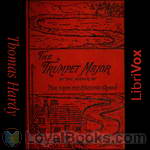 The Trumpet-Major
The Trumpet-Major
Our heroine, Anne Garland, lives quietly in a rural community deep in the English countryside. However, the arrival of several regiments preparing for an expected invasion brings colour and chaos to the county. A graceful and charming young woman, Anne is pursued by three suitors: John Loveday, the trumpet-major in a British regiment, honest and loyal; his brother Robert, a merchant seaman and womaniser, and Festus Derriman, the cowardly son of the local squire. Set at the time of the Napoleonic wars, this is the author’s only historical novel, and unusually for Hardy’s stories, most of the characters live happily ever after. | |
 The Woodlanders
The Woodlanders
The Woodlanders is one of Hardy's later novels, although he originally intended it as a successor to Far From The Madding Crowd. It concerns the life and loves of Giles Winterborne,Grace Melbury,Edred Fitzpiers, Felice Charmond and Marty South.The topics of class,fidelity and loyalty are delt with in Hardys exquisite style and set in the beautiful woodlands of Hintock. | |
 Two on a Tower
Two on a Tower
The plot concerns two – literally starcrossed – lovers: Swithin St. Cleeve, a very young amateur astronomer, and Viviette Constantine, an unhappily married and abandoned woman 8 or 9 years his senior. Each night Swithin climbs the old tower of the title, in the grounds of the Constantine estate. Lady Constantine, whose husband has been absent some years on an extended hunting and exploring journey to Africa, joins the young man in his stargazing, and supports his astronomical ambitions by buying him equipment, though his dreams of scientific renown are disappointed.Their relationship then deepens and takes several twists and turns. | |
 Life's Little Ironies; A Set Of Tales With Some Colloquial Sketches Entitled A Few Crusted Characters
Life's Little Ironies; A Set Of Tales With Some Colloquial Sketches Entitled A Few Crusted Characters
Eighteen short stories by a master story teller. | |
 Desperate Remedies
Desperate Remedies
Cytherea Graye is poor, but accepts a post as lady's maid to the eccentric Miss Aldclyffe, the woman whom her father had loved but had not been able to marry. Cytherea in turn loves a young architect, Edward Springrove; but will Miss Adclyffe's machinations, the knowledge that Edward is already engaged to a woman whom he does not love, and the urgent need to support her sick brother drive Cytherea to accept the hand of Aeneas Manston? Will true love triumph in the end or will she be forced to live a life of misery with a man she doesn't love? ( Michele Eaton ) | |
 Changed Man And Other Tales
Changed Man And Other Tales
Eleven short stories. | |
 Wessex Poems
Wessex Poems
A collection of poetry by Thomas Hardy, some of which were previously published or adapted into his prose works. | |
 Group of Noble Dames
Group of Noble Dames
The pedigrees of our county families, arranged in diagrams on the pages of county histories, mostly appear at first sight to be as barren of any touch of nature as a table of logarithms. But given a clue—the faintest tradition of what went on behind the scenes, and this dryness as of dust may be transformed into a palpitating drama. Out of such pedigrees and supplementary material most of the following stories have arisen and taken shape. | |
 Romantic Adventures of a Milkmaid
Romantic Adventures of a Milkmaid
A milkmaid, Margery, encounters a mysterious foreigner and perhaps prevents him from committing suicide. In gratitude, the man offers her any reward she can name. She tells him she wants to go to a ball. He takes her, admittedly a bit reluctantly, to a yeoman's ball in a neighboring county. From there the story continues because of course, a lot happens after the ball. She happens to already have an engagement to a local lad but his hold over her seems to grow of its own accord. This Hardy story may not end the way you wish, but that is often true of stories by this master writer. | |
By: H. G. Wells (1866-1946) | |
|---|---|
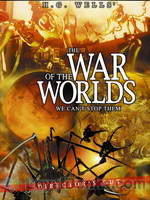 The War of the Worlds
The War of the Worlds
Extraterrestrial invasion, the earth taken over by omniscient intelligences from Mars, the whole of humanity under siege and a nameless narrator who seems to be the lone survivor of the complete devastation of human civilization – scenes from a Hollywood sci-fi blockbuster? Far from it! The War of the Worlds by HG Wells was written more than a century ago and went on to become an iconic work in the science fiction genre, spawning a whole new genre of literature featuring alien invaders. It was in fact the first book to present the idea of conflict between inhabitants of different planets... | |
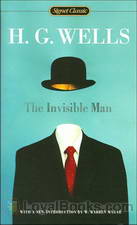 The Invisible Man
The Invisible Man
One dark and stormy night, a stranger arrives in West Sussex at a village inn. He is heavily clad in an overcoat and his face is wrapped in bandages. He takes a room at the inn, but refuses to socialize with anyone. He stays cooped up in his room all day and night, working with strange chemicals and apparatus. Suddenly, strange events begin to happen in the village. Mysterious burglaries and fires break out, culminating in a destructive rampage across the peaceful countryside. The stranger is the keeper of a terrible secret... | |
 The Island of Dr. Moreau
The Island of Dr. Moreau
One of the first instances of science fiction, Wells’ classic tale published in 1986 examines various controversial philosophical issues active at the time of its publication, most notable being the implications of vivisection and degeneration. Narrated by its everyman protagonist Edward Prendick, the novel follows the events of his stay at a mysterious island, home to ghastly secrets, horrors, and incomprehensible experiences. Furthermore, the novel features innovative themes which have become iconic in the modern science fiction genre, including moral and ethical responsibility, evolution, and man’s interference with the course of nature... | |
 The First Men in the Moon
The First Men in the Moon
Written nearly seven decades before Neil Armstrong's historic “Giant leap for Mankind” this book by one of the most influential sci-fi writers in English is an interesting read. The First Men in the Moon by Herbert George Wells, the English author who is today called the Father of Science Fiction, describes a strange and fantastic voyage. Businessman and budding playwright, John Bedford takes a sabbatical from his work and decides to write a play. He moves to a lonely cottage in Kent where he hopes to come up with a theatrical masterpiece... | |
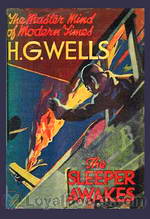 The Sleeper Awakes
The Sleeper Awakes
Originally serialized from 1898 to 1903, Wells later made some crucial changes to the piece to create a flawless dystopian science fiction novel published in 1910 and renamed The Sleeper Awakes. The novel focuses on an Englishman, who falls in a deep sleep lasting two centuries, and sees him wake up in an unrecognizable setting and extremely wealthy. An enthralling tale of dystopian society depicted through a colorful imagination, The Sleeper Awakes concentrates on topics including dystopia, political power, religion, plutocracy, and individual and social awakening... | |
 The Food of the Gods and How it Came to Earth
The Food of the Gods and How it Came to Earth
Two stuffy English scientists, always looking to further their scientific knowledge, create a substance called Herakleophorbia, which in its fourth incarnation – known as Herakleophorbia IV – has the special ability of making things increase greatly in size. As the scientists begin experimentation on some chicks, the substance is misused by some “country folk” who don’t take it seriously and soon Herakleophorbia IV is running rampant throughout England and then across the globe, creating giant plants and animals that wreak havoc on the land and then the people... | |
 Ann Veronica
Ann Veronica
Ann Veronica was a controversial book detailing the development of a naive school girl into a “New Woman”. When it was published, the Spectator described it as a “poisonous book … capable of poisoning the minds of those who read it.” Although it is unlikely to offend modern listeners in this way, this novel addresses many feminist issues that are still relevant today. | |
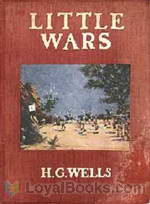 Little Wars (A Game for Boys)
Little Wars (A Game for Boys)
Miniature wargaming got its start with the publication in 1913 of this thoroughly entertaining little account of how H.G. Wells, with certain of his friends, took their childhood toys and turned play into acceptable middle-aged sport by subjecting the exercise to the civilizing influence of actual rules. While wargaming progressed far past these beginnings, Wells observes how “little wars” with even his elementary rules can suggest the wholesale crudity of the real thing. “You have only to play at Little Wars three or four times to realise just what a blundering thing Great War must be... | |
 The Wheels of Chance
The Wheels of Chance
“The Wheels of Chance – A Bicycling Idyll” follows the adventures of a Drapers Assistant who, having brought an ancient bicycle, sets off on a 2 week tour of the countryside. He encounters a Lady in Grey wearing rationals (bloomers). And his world will never be the same again | |
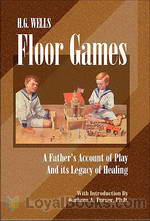 Floor Games
Floor Games
H.G. Wells had so much fun playing with his children on the floor of their playroom, he decided to write a jovial little book to inspire other parents in their pursuit of quality time with the kids. While the raw materials available from hobby stores of his day were woefully short of the variety and quality of what can be bought easily now, he and his sons created their own worlds to rule. This short work describes two games of imagination played out upon the floor of his home – an archipelago of islands, and a thoroughly integrated city, conveniently organized with two mayoral positions for his sons “G... | |
 The World Set Free
The World Set Free
Radioactive decay is a major theme in the novel The World Set Free, published in 1914. Wells explores what might happen if the rate of decay could be sped up. The book may have encouraged scientists to explore theories of nuclear chain reaction. It also served as a vehicle for Wells to develop his ideas on survival of the human race. | |
 A Story of the Stone Age
A Story of the Stone Age
This story is of a time beyond the memory of man, before the beginning of history. . . | |